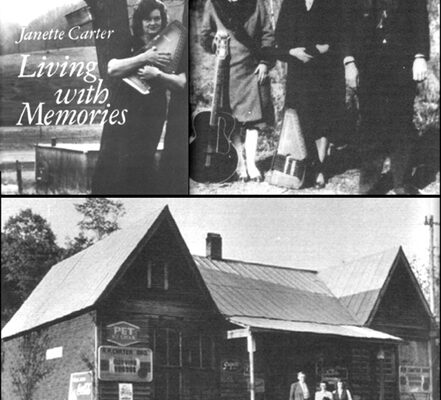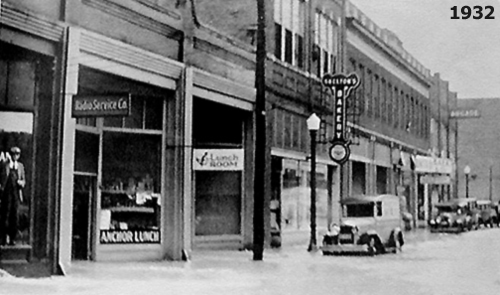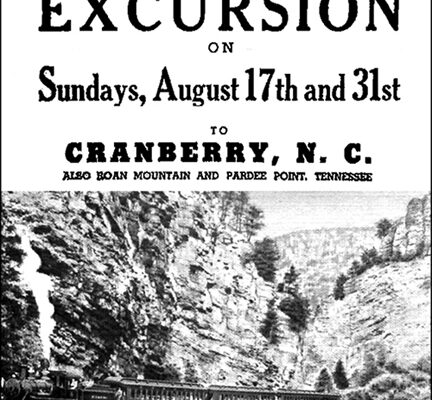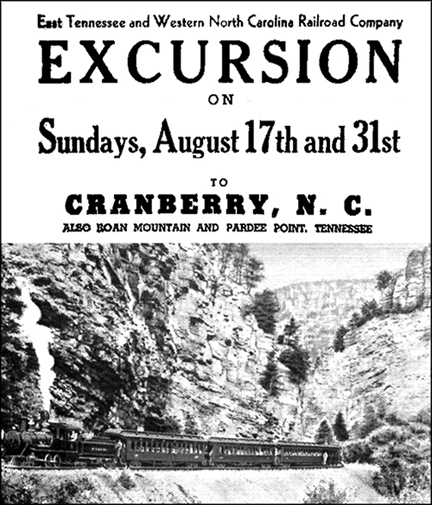This past January, I wrote about White Rock Summit, the tallest peak on Buffalo Mountain that collapsed in 1882, as reported by several newspapers around the country. The massive rockslide was precipitated by two weeksof steady rain that flooded a sizable portion of East Tennessee that extended west to Knoxville. Damage was widespread.
Two people immediately corroborated the event. Dr. Ted Thomas of Milligan College sent me a student’s comments from a June 1884 group outing to the rock. In part, it said, “We started homeward, coming down the track of ruin caused by the fall of the great White Rock.” Mrs. Carsie Lodter, whose late husband once taught at Milligan, recalled conversations with her grandfather who heard the rumble from his nearby Oak Grove residence in Carter County.

Recently while perusing Thomas William Humes’ book, The Loyal Mountaineers of Tennessee (1888), I spotted another mention of the original rock as part of a depiction of the Watauga landscape in 1863, 19 years before the collapse: “In the southwest is the bold and craggy front of the Buffalo Mountain that may easily be fancied to resemble an ancient castle of massive strength and standing in solitude, its brow uplifted into the skies, impresses the mind of the spectator with a feeling of awe for its grandeur and majesty.” The author’s comment fits the older undisturbed rock, not the existing fractioned one.
In that year, the Civil War was raging. East Tennessee faced a dangerous scarcity of food because more than 30,000 of its able-bodied men had migrated north to serve in the Federal army, while others had been captured and forced into Southern prisons. Healthy, vigorous males were essentially unavailable to till the soil and engage in other hard labor. Those suffering the heaviness from extreme destitution the greatest were women, children, the elderly and invalids. As autumn marched toward winter, the outlook became more ominous and distressing for the populace.
Confederate soldiers were quartered in all directions throughout East Tennessee, actively crossing Union-held land from one location to another. Their presence caused friction between people with divided allegiance (brother against brother) to the war. Soldiers on both sides competed for the same diminutive food supply. To add to the problem, provisions seized by one group were totally consumed, carried away, or destroyed to prevent it from falling into enemy hands.
East Tennesseans had seen conflict from a previous war. In 1780, the “Back-water men,” as Colonel Patrick Ferguson of the British Army called them, bravely gathered under John Sevier, Isaac Shelby and William Campbell for a secretive and successful military expedition to King's Mountain, South Carolina, bringing about an eventual end to the country’s fight for independence.
Even during trying times of two internal wars, the one bright spot in people’s lives was the natural beauty of their beautiful rugged surroundings. Across numerous mountains were pleasant valleys, through which flowed the Doe River, Buffalo Creek, Watauga River, Indian Creek and nearby Nolichucky River.
In addition to the comment concerning Buffalo Mountain’s rocky face, other places mentioned were the blue front of Holston Mountain, seven or eight miles away; Lynn Mountain, three miles east; and the blue outline of the Unaka and Roan mountains to the south.
These mental and physical areas of refuge offered temporary solace from the ravages of gruesome wars. The diverse features of the landscape combined to form awe-inspiring and beautiful landscapes for an ailing people.








